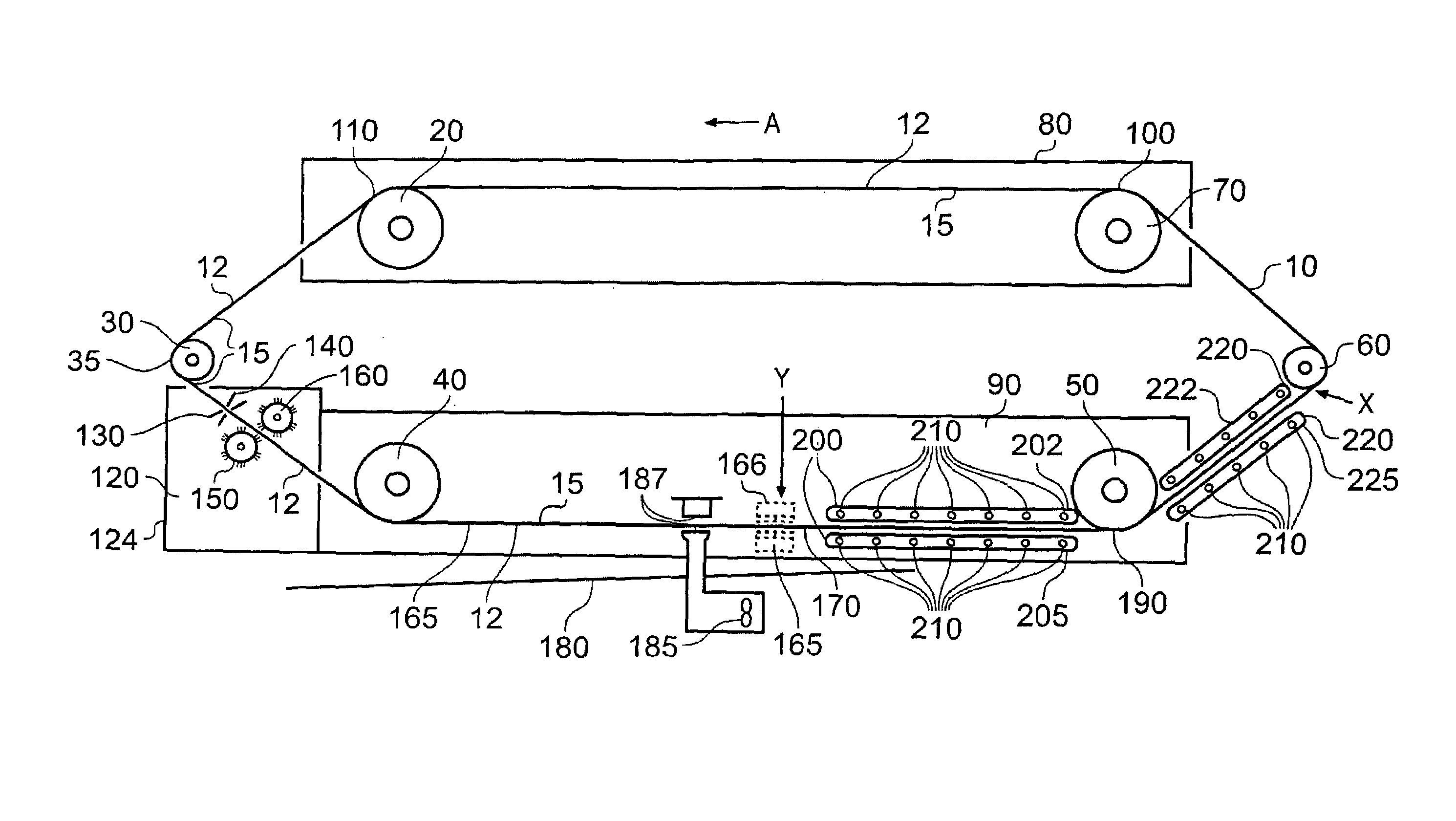Self-cleaning foodstuff conveyors
a conveyor and food technology, applied in the direction of conveyor parts, cleaning, food preservation, etc., can solve the problems of increasing the potential source of food microbial contamination, and the risk of cross contamination of subsequent items, so as to improve the work efficiency, shorten the dwell time, and increase the energy
- Summary
- Abstract
- Description
- Claims
- Application Information
AI Technical Summary
Benefits of technology
Problems solved by technology
Method used
Image
Examples
Embodiment Construction
[0034]Referring first to FIG. 1: a conveyor embodying the present invention comprises continuous belt 10 having an upper (or conveying) surface 12 and an under (or non-conveying) surface 15, supported on guide rollers 20, 30, 40, 50, 60 and drive roller 70. It will be appreciated that the number, position, and nature (drive or guide) of the rollers is not crucial for the invention; they are shown as herein for illustration and not restriction.
[0035]Belt 10 may be of solid construction, preferably being made from UV receptive or even UV transmissive material to improve cleaning at surface non-uniformities. Additionally or alternatively it may be apertured, for example it may be made of interlocking steel or plastic mesh.
[0036]Drive roller 70 drives continuous belt 10 in the conveying direction shown by arrow A, that is in an anti-clockwise direction in FIG. 1 as viewed. Drive roller 70 and guide roller 20, which support belt 10 while conveying, are supported by conveyor frame 80. The...
PUM
 Login to View More
Login to View More Abstract
Description
Claims
Application Information
 Login to View More
Login to View More - R&D
- Intellectual Property
- Life Sciences
- Materials
- Tech Scout
- Unparalleled Data Quality
- Higher Quality Content
- 60% Fewer Hallucinations
Browse by: Latest US Patents, China's latest patents, Technical Efficacy Thesaurus, Application Domain, Technology Topic, Popular Technical Reports.
© 2025 PatSnap. All rights reserved.Legal|Privacy policy|Modern Slavery Act Transparency Statement|Sitemap|About US| Contact US: help@patsnap.com


